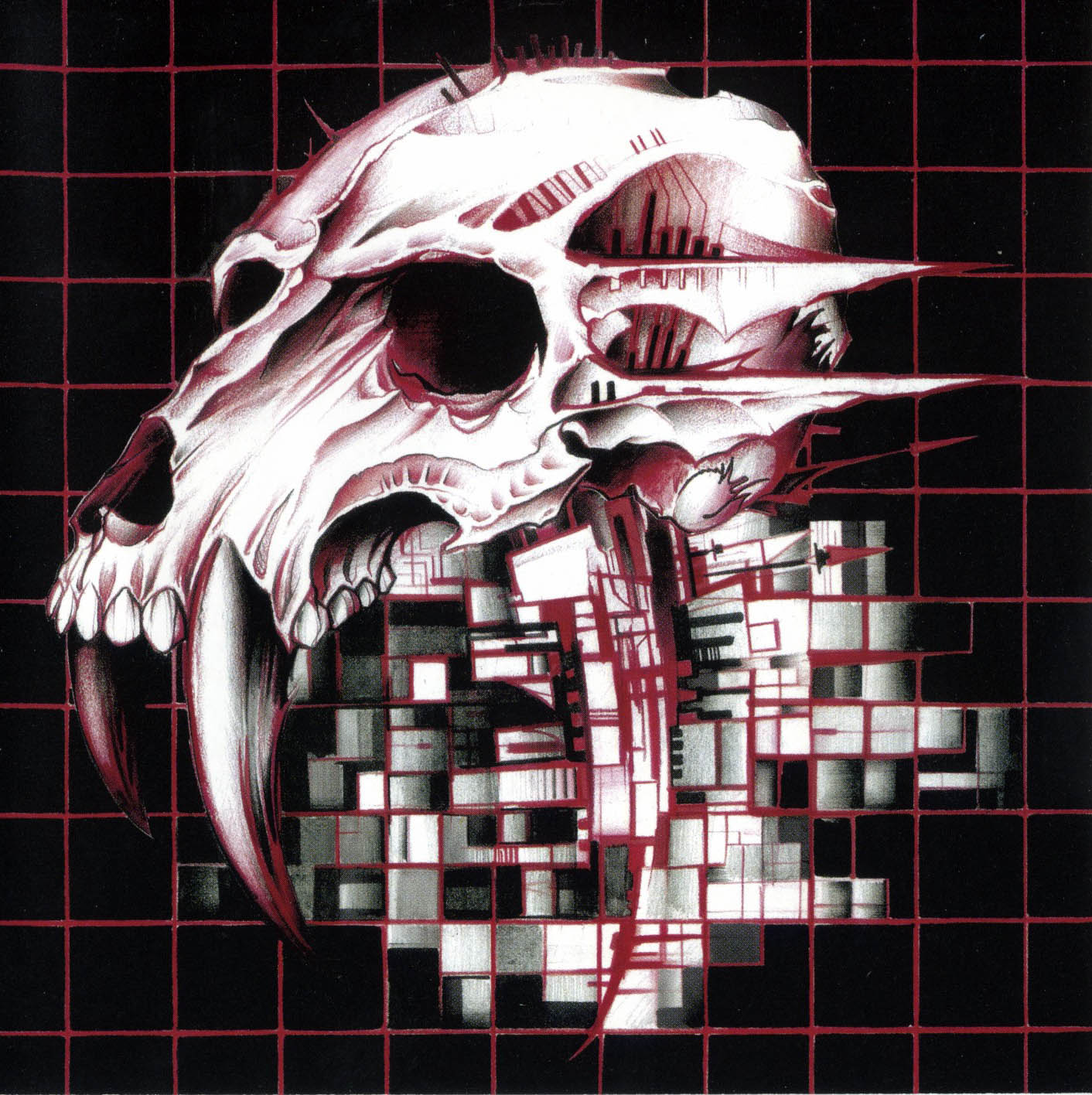I have a solution with a bit fields. Now your bool is 1 byte :
struct Flags { bool flag0 : 1; bool flag1 : 1; bool flag2 : 1; bool flag3 : 1; bool flag4 : 1; bool flag5 : 1; bool flag6 : 1; bool flag7 : 1; };Or for example:
struct Flags { bool flag0 : 1; bool flag1 : 1: int x_cord : 3; int y_cord : 3; };I watched a YouTube video where a dev was optimizing unity code to match the size of data that is sent to the cpu using structs just like this.
7 Shades of Truth
std::vector<bool>fits eight booleans into one byte.std::vector<std::vector<bool>> is how I stored the representation of a play field for a Tetris game I made once.
auto v = std::vector<bool>(8); bool* vPtr = v.data; vPtr[2] = true; // KABOOM !!!I’ve spent days tracking this bug… That’s how I learned about bool specialisation of std::vector.
Does anybody ever figure in parity when comparing bit sizes and all that jazz or are we only ever concerned with storage space?
You can’t store data in parity bits… so it’s irrelevant.
This guy never coded in KEIL C on an 8051 architecture. They actually use bit addressable RAM for booleans. And if you set the compiler to pass function parameters in registers, it uses the carry flag for the first bit or bool type parameter.
…or you can be coding assembler - it’s all just bits to me
string boolEnable = "True";Violence
Maybe json is named after Jason Voorhees
typedef struct { bool a: 1; bool b: 1; bool c: 1; bool d: 1; bool e: 1; bool f: 1; bool g: 1; bool h: 1; } __attribute__((__packed__)) not_if_you_have_enough_booleans_t;This was gonna be my response to OP so I’ll offer an alternative approach instead:
typedef enum flags_e : unsigned char { F_1 = (1 << 0), F_2 = (1 << 1), F_3 = (1 << 2), F_4 = (1 << 3), F_5 = (1 << 4), F_6 = (1 << 5), F_7 = (1 << 6), F_8 = (1 << 7), } Flags; int main(void) { Flags f = F_1 | F_3 | F_5; if (f & F_1 && f & F_3) { // do F_1 and F_3 stuff } }Why not
if (f & (F_1 | F_3)) {? I use this all the time in embedded code.edit: never mind; you’re checking for both flags. I’d probably use
(f & (F_1 | F_3)) == (F_1 | F_3)but that’s not much different than what you wrote.
You beat me to it!
Or just
std::bitset<8>for C++. Bit fields are neat though, it can store weird stuff like a 3 bit integer, packed next to booleansThat’s only for C++, as far as I can tell that struct is valid C
just like electronic components, they sell the gates by the chip with multiple gates in them because it’s cheaper
That’s a good analogy.
Could a kind soul ELI5 this? Well, maybe ELI8. I did quite a bit of programming in the 90-00s as part of my job, although nowadays I’m more of a script kiddie.
A Boolean is a true/false value. It can only be those two values and there be represented by a single bit (1 or 0).
In most languages a Boolean variable occupies the space of a full byte (8 bit) even though only a single of those bits is needed for representing the Boolean.
That’s mostly because computers can’t load a bit. They can only load bytes. Your memory is a single space where each byte has a numeric address. Starting from 0 and going to whatever amount of memory you have available. This is not really true because on most operating systems each process gets a virtual memory space but its true for many microcontrollers. You can load and address each f these bytes but it will always be a byte. That’s why booleans are stored as bytes because youd have to pack them with other data on the same address other wise and that’s getting complicated.
Talking about getting complicated, in C++ a std::vector<bool> is specialized as a bit field. Each of the values in that vector only occupy a single bit and you can get a vector of size 8 in a single byte. This becomes problematic when you want to store references or pointers to one of the elements or when you’re working with them in a loop because the elements are not of type bool but some bool-reference type.
And performance optimisation of a compiler for a 64 bit CPU will realign everything and each boolean will occupy 8 bytes instead.
A boolean value only needs 1 bit (on or off) for true or false. However the smallest bit of addressable memory is a byte (8 bits) hence 7 are technically wasted.
For low memory devices you could instead store 8 different Boolean values in one single byte by using bit masking instead
In the industrial automation world and most of the IT industry, data is aligned to the nearest word. Depending on architecture, that’s usually either 16, 32, or 64 bits. And that’s the space a single Boolean takes.
That’s why I primarily use booleans in return parameters, beyond that I’ll try to use bitfields. My game engine’s tilemap format uses a 32 bit struct, with 16 bit selecting the tile, 12 bit selecting the palette, and 4 bit used for various bitflags (horizontal and vertical mirroring, X-Y axis invert, and priority bit).
Bit fields are a necessity in low level networking too.
They’re incredibly useful, I wish more people made use of them.
I remember I interned at a startup programming microcontrollers once and created a few bitfields to deal with something. Then the lead engineer went ahead and changed them to masked ints. Because. The most aggravating thing is that an int size isn’t consistent across platforms, so if they were ever to change platforms to a different word length, they’d be fucked as their code was full of platform specific shenanigans like that.
/rant
Yeah. I once had to do stuff to code that had bit-fields like that and after a while, realised (by means of StackOverflow) that that part is UB and I had to go with bitwise operations instead.
Undefined Behavior…?
Ok, I recalled wrong, it was unspecified
I always use stdint.h so that my types are compatible across any mcu. And it makes the data type easily known instead of guessing an i t size
Good rant.
Now store the numbers (array):
0 0 0 1 0 1 1 2
think 8 bytes???
if wasting a byte or seven matters to you, then then you need to be working in a lower level language.
It’s 7 bits…
Pay attention. 🤪
7 bytes! Look at Mr. Moneybags here!
I swore I read that mysql dbs will store multiple bools in a row as bit maps in one byte. I can’t prove it though
SIMD Might be the term youre looking for (Single Input Multiple Data)
I recall that sql server will group bit columns into bytes for storage, wouldn’t surprise me if other flavours did something similar.
I set all 8 bits to 1 because I want it to be really true.
You jest, but on some older computers, all ones was the official truth value. Other values may also have been true in certain contexts, but that was the guaranteed one.
TIL, 255 is the new 1.
Aka -1 >> 1 : TRUE
But only if you really mean it. If not, it’s a syntax error and the compiler will know.
I was programming in assembly for ARM (some cortex chip) and I kid you not the C program we were integrating with required 255, with just 1 it read it as false
01111111 = true
11111111 = negative true = false
Could also store our bools as floats.
00111111100000000000000000000000is true and10111111100000000000000000000000is negative true.Has the fun twist that true & false is true and true | false is false .
Why do alternative facts always gotta show up uninvited to the party? 🥳
So all this time true was actually false and false was actually true ?
Depends on if you are on a big endian or little endian architecture.
Come on man, I’m not gonna talk about my endian publicly
negative true = negative non-zero = non-zero = true.
What if it’s an unsigned boolean?
Cthulhu shows up.
Common misconception… Unsigned booleans (ubool) are always 16-bits.

Super true.
00001111 = maybe
10101010 = I don’t know
0011 1111 = could you repeat the question
00000001 00000000 00001111 10101010
100001111 = maybe not
Is this quantum computing? 😜
Schrödingers Boolean












